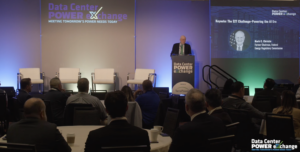
More than 100 of the world’s largest energy companies are betting that artificial intelligence (AI) will revolutionize how electricity gets made, moved, and managed. But they’re not waiting for Silicon Valley to build it for them—they’ve taken matters into their own hands through an EPRI-led consortium.
That initiative is the Open Power AI Consortium, which EPRI launched in March 2025 to drive the development and deployment of an open AI model tailored for the power sector. According to its mission statement, the Open Power AI Consortium “aims to evolve the electric sector by leveraging advanced AI technologies to innovate the way electricity is made, moved, and used by customers. By fostering collaboration among industry leaders, researchers, and technology providers, the consortium will drive the development and deployment of cutting-edge AI solutions tailored to enhance operational efficiencies, increase resiliency and reliability, deploy emerging and sustainable technologies, and reduce costs while improving the customer experience.”
“We’re really looking at building an ecosystem to accelerate the development and deployment, and recognizing that, while AI is advancing rapidly, the energy industry has its own unique needs, especially around reliability, safety, regulatory compliance, and so forth. So, the consortium provides a collaborative platform to develop and maintain domain-specific AI models—think a ChatGPT tailored to the energy industry—as well as sharing best practices, testing innovative solutions in a secure environment, and long term, we believe this will help modernize the grid, improve customer experiences, and support global safe, affordable, and reliable energy for everyone,” Jeremy Renshaw, executive director for AI and Quantum with EPRI, said as a guest on The POWER Podcast.
Among the consortium’s members are some of the largest energy companies in the world, including Constellation, Con Edison, Duke Energy, EDF, Korea Electric Power Corp. (KEPCO), New York Power Authority (NYPA), Pacific Gas and Electric Co. (PG&E), Saudi Electricity Co., Southern Company, Southern California Edison, Taiwan Power Co., and Tennessee Valley Authority (TVA). It also includes entities like Amazon Web Servies (AWS), Burns and McDonnell, GE Vernova, Google, Gulf Cooperation Council (GCC) Interconnection Authority, Korea Hydro and Nuclear Power (KHNP), Khalifa University, Microsoft, Midcontinent Independent System Operator (MISO), PJM, Rolls-Royce SMR, and Westinghouse Electric Co.
“For many years, the power industry has been somewhat siloed, and there were not many touch points or communication between global utilities, technology companies, universities, and so forth. So, this consortium aims to facilitate making new connections between these important and impactful organizations to increase collaboration and information sharing that will benefit everyone,” Renshaw explained.
EPRI, together with Articul8 and NVIDIA, has already developed the first set of domain-specific generative AI models for electric and power systems aimed at advancing the energy transformation. Although the technology has not been released publicly, it will be made available soon as an NVIDIA NIM microservice for early access. This development sets the foundation for more to come.
“One of the reasons that we’re looking at the domain-specific models is looking at improved contextual knowledge, understanding, and retrieval,” Renshaw said. “Our industry deals with real-time systems, critical infrastructure, and strict regulatory requirements,” he noted. “A domain specific Gen AI model can be trained on utility-grade data, understanding utility terminology, and make contextually aware decisions. For example, a general AI model might misinterpret terms like ‘islanding’ or ‘black start,’ whereas, a power-specific model can understand that these are critical grid operations,” Renshaw said. “This can help lead to more-accurate, safer, and actionable outputs, where you can trust the output at a higher level, which is essential for dealing with mission-critical systems.”
As for how these models might be employed, Renshaw said EPRI has compiled a library of more than 250 use cases, and is in the process of ranking and evaluating them so the consortium can build on the most valuable options. “A few use cases that I’m excited about would be things like predictive and condition-based maintenance—looking at power generation or grid assets to do maintenance as needed, not necessarily on a scheduled basis,” Renshaw said.
Another use case he mentioned involves customer service automation. Picture an AI agent that is significantly more efficient than a human. At some point soon, customers may ask for it rather than a person because the AI agent can resolve problems quicker and with less hassle.
“You could also imagine another use case for AI copilots or system operators that could help to identify potential solutions for existing challenges faster, bring the data that you need to you immediately to make better decisions more rapidly,” Renshaw proposed. “You can also look at AI-assisted planning for renewable integration, setting switches and relays, running powerful simulation, short circuit simulations, load forecasting, weather forecasting, and so many more.”
How soon could these ideas become reality? “What wasn’t possible three months or six months ago is very possible today, and even commonplace,” said Renshaw. “And so, being able to predict where we go in one, two, or five years, I would say there are many possibilities.” In any case, EPRI’s Open Power AI Consortium is likely to expedite the timeline.
To hear the full interview with Renshaw, which contains more about the consortium, benefits it is expected to provide to the power industry, the symbiotic relationship between energy and AI, how AI can support grid modernization and decarbonization, and more, listen to The POWER Podcast. Click on the SoundCloud player below to listen in your browser now or use the following links to reach the show page on your favorite podcast platform:
For more power podcasts, visit The POWER Podcast archives.
—Aaron Larson is POWER’s executive editor (@AaronL_Power, @POWERmagazine).










